This is a review for the Vulcan 28.5 mm Training Bearing Bar – which is practically identical to the previous Vulcan bar that I reviewed, the Vulcan One. The primary difference between these two bars is that the Vulcan One Basic is a bushing bar, and the 28.5 mm Training Bar is a needle bearing bar.
I strongly suggest that you take a look at my Vulcan One Basic review if you’re interested in this particular bearing bar because the majority of that review applies to this barbell as well. As a matter of fact this review will merely summarize the features that apply to both of these bars, and only go into more detail where they differ.
Update 2017/2018: The Vulcan 28.5 mm Training Bar has received some updates since the publication of this review. Rather than being a black zinc bar, it is now chrome finished. It is also now a 28 mm bar rather than 28.5 mm bar. Not only are these both massive upgrades, but the bar is $20 less than it was in the past. This is a great starter bearing bar at $319.
Please note that other than what’s in red here, I have left the review intact because I do not have the newer version to review. Just keep those changes in mind as you read.
Vulcan One Basic Review Recap
Despite my suggestion to read the other review, I’ll briefly summarize my thoughts on the Vulcan One Basic here anyway.
In a nutshell, I really liked the One – I found it to be a lot of bar for the money. It displays a good amount of whip, and it has an above-average tensile strength rating for an economy bar. The Vulcan One also has fantastic sleeve rotation for a bushing bar, and a moderate knurling that’s perfect for high-rep CrossFit sets; and general training sessions. It is a bar that I have recommended numerous times since publishing that review.
The Vulcan Training Bearing Bar offers all the same features and the same great feel, but with high-speed sleeves for those who train with higher reps and at higher weights. It costs a little bit more, but bearings do come with a higher price tag, of course.
Vulcan Training Bearing Bar Specifications
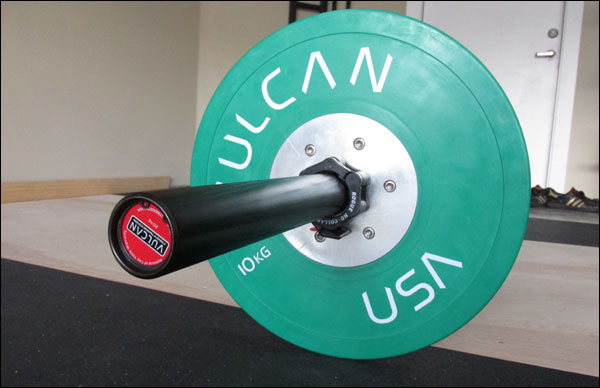
- Standard men’s 20 kg
- Dual-marked,
28.528 mm shaft Black zinc coatingchrome (sleeves and shaft)- Lab verified minimum tensile strength rating of 190,000 PSI
- Moderate knurling; knurled to shoulder; no center knurl
- 50 mm sleeves (49.98 mm), 16¼ in. loadable length
- 4 needle bearings per sleeve
- Snap-ring assembly
- Good whip for 28.5 mm bar
- Lifetime warranty
$339$319 including shipping
Like I said, the feel of the Vulcan One and the Vulcan Bearing is very much the same. Actually, they are the same except for the three items that I listed above in blue: price, warranty, and sleeve assembly. The $100 price difference gets you 8-needle bearings instead of bronze bushings, and a full lifetime warranty.
Vulcan Bearing Bar – Sleeve Rotation
I don’t really consider this bar to be an economy bar in the same sense as the Vulcan One. Once you get beyond the $250-300 mark, it feels odd to claim “economy.” However, it is a reasonable price for a needle bearing bar, so I suppose it’s fine to say that it’s “economical.” After all, $339 for eight high-speed bearings on a 190k PSI shaft is a sweet deal, and these are decent bearings. The sleeves spin quick and turnover is smooth, making this bar super easy to get under.
In addition to the obvious lifting I did with the Vulcan Bearing Bar, I also put it through all the standard spin tests. I found no reason to be anything less than impressed with the rotation. The sleeves spin smoothly and quietly both with & without plates, and also the shaft spins freely within the sleeves as well.
(I don’t get great natural lighting due to the direction my garage is facing, so pardon the long shadows in the video.)
In the video below, I cut it a little short because the sleeves just wouldn’t stop spinning. I think after the first 30-60 seconds, you get the idea anyway. Plus it’s a dumb test.
This bar spins exceptionally well for a bar at this price point (or any, really.) Actually, these sleeves spin longer than any other bar I currently have, including the Klokov.
Do you need all this spin? Typically no; but there is nothing wrong with having it. If you work short sets or work with average weights, solid bushing bars like the Vulcan One or Vulcan Standard will probably serve you well for a very long time. If you’re doing a lot of high-rep Olympic lifts, it may be worth the extra money to buy a bearing bar since they are a lot easier on your wrists, and they won’t seize up or slow down over time like bushings and ball bearings tend to do.
When it comes down to it there is only so much I can say about the bar’s rotation, and that is because the bar simply spins well. There aren’t any red flags or anything else alarming to point out. Thumbs up on the spin.
Vulcan Bearing Bar – Shaft
The shaft is identical to the Vulcan One’s; same 190k PSI steel, dual markings, black zinc finish, and same shaft length and diameter (28.5 mm.) As you probably know, the 190k PSI rating is a very respectable number for an Olympic bar, and one that offers both strength & elasticity.
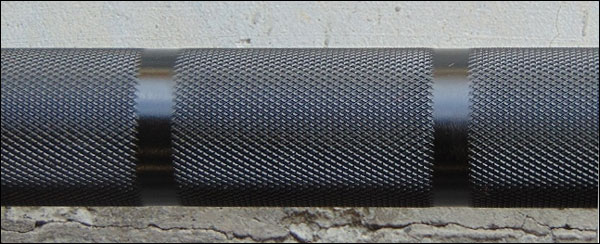
Speaking of PSI ratings, many people are just fascinated with some of the new budget bars that boast ratings in the 200,000’s. Sadly, more often than not, these 210-260k PSI ratings are merely a marketing strategy. It takes a lot of expertise and money to safely and properly craft a barbell shaft with an exceptionally high PSI rating that still has any useful elasticity to it. So much so that bar manufacturers that even possess the skill to do it would not sell you a bar with this attribute AND high-quality needle bearings for $200-300; not if they wanted to stay in business anyway.
It wasn’t that long ago that a normal bar would be 130-165k PSI, and no one thought much of it. This new and relatively common 190k PSI steel is no doubt stronger than any bar your pappy worked out with in his entire life, and I’ll wager that he never bent a bar. Look at it like this: if 190k is good enough for the $500-600+ Rogue Olympic WL Bar and even some of the IWF training bars, then it’s certainly good enough for a budget bar.
190k PSI shafts are perfect for any CrossFitter or off-stage Olympic weightlifter. They’re strong, they whip, and they are affordable. You are not going to permanently bend 190k+ shafts. Besides, excessive PSI ratings lead to rigidity when not done properly, and that’s definitely not what you want in a CrossFit/Olympic bar.
So before you let a crazy high PSI rating in a product description be the deciding factor for your next barbell purchase, ask yourself this. Do you really think anyone is selling a barbell with all the same specs and attributes as a $1200 Ivanko for $200-300? I don’t think so.
Vulcan Quality
Vulcan Strength really knows their stuff when it comes to barbells. I get to talk with lots of different bar manufacturers and there is definitely varying levels of knowledge among them. I’ve had enough discussions with the boss-man at Vulcan to know that he knows the in’s & out’s of barbells. Not only Vulcan bars, but the competition’s bars as well. I am completely confident in Vulcan’s ability to develop affordable, quality barbells.
It’s safe to say that after working with these two Vulcan bars that Vulcan will always be in the mix when considering a new bar; either for review purposes or my own personal use. I hope to eventually lift on and review the majority of the Vulcan Bars actually, especially the Professional Olympic Bar.
Downsides?
I went into some detail on this when I reviewed the Vulcan One Basic so I’ll just mention it and move on – I’m not the hugest fan of black zinc. I get it that it’s used rather than chrome to keep the price down, and it’s definitely very cool looking when it’s new, but I just don’t like how easy it is to scratch it. Clearly not a huge deal with all other aspects of a bar being top-notch, but it is one of those things. Oh and it has a tendency to turn green over time.
Also, and this is more of a personal preference thing, but I like semi-aggressive knurl, and this bar’s knurl is moderate. I know it’s not a competition bar, and most CrossFitters are not looking for a cheese grater anyway, but this is a review, and it’s not a review if I leave off my cons.
Based on the feedback I get from people on bar knurl preference overall, it sounds like the majority of people would like this bar’s knurling. I guess I’m the weird one.
Random Things
Shipping
There seem to be some companies out there who are doing a not-so-great job of shipping barbells to their customers. That is to say, they are using low-grade tubes that fall apart during transit, or sometimes even just normal corrugated boxes. When a barbell slides out of a tube or box in transit, it gets scratched, smashed, and looks like shit by the time it gets to you.
Due to the frequency of complaints I hear about this happening, I thought I’d let you know that after having two different Vulcan bars shipped to me, both bars showed up in strong, sturdy tubes with the ends still intact and the bar still looking new.
Yeah, barbells experience wear and tear. I’d like to be the one to “wear and tear” my own bar, thank you very much.
Warranty
The Vulcan Bearing Bar has a lifetime warranty versus the 4-year warranty on the Vulcan One. While I don’t think there is anything wrong with a 4-year warranty on an economy bar, it’s still nice that the bearing version is lifetime. There is definitely piece-of-mind that comes with knowing your bar is covered for as long as you own it. Most major IWF brands don’t even offer lifetime warranties, and 4-years is still longer than 1-year.
Vulcan Training Bearing Bar
So there you have it. Another solid Vulcan bar. If I could change any single thing about the bar, I’d wrap it in hard chrome (well go figure, it is now). Otherwise, it’s a solid CrossFit and Olympic training bar; a great mid-range bar for a garage gym.
Check out the Vulcan 28.5 Training Bearing Bar
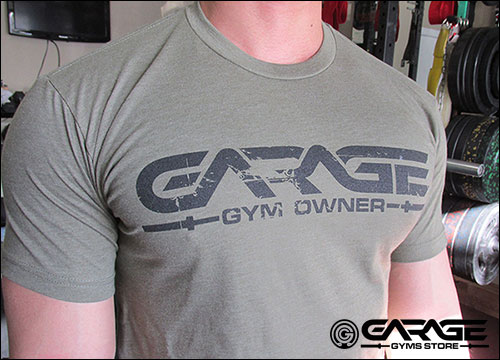

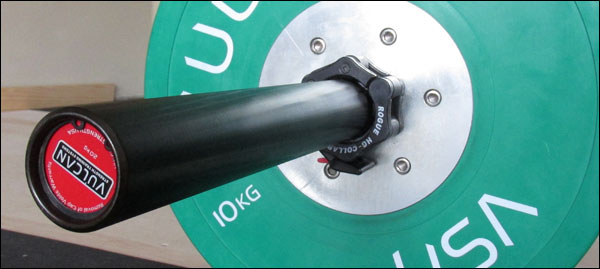
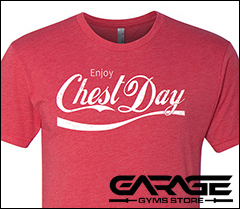
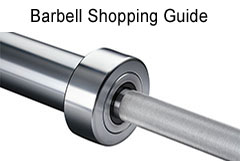
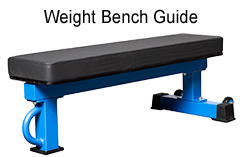
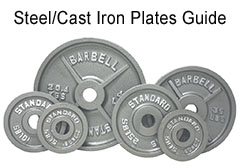
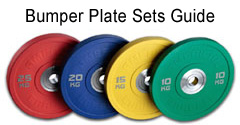
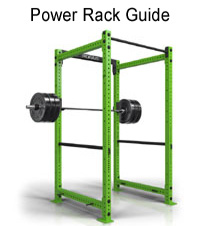
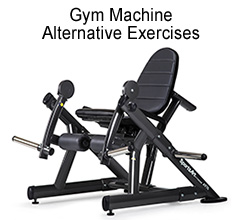

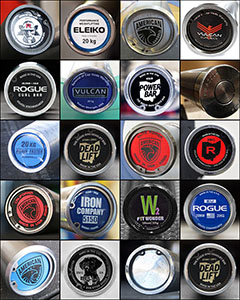

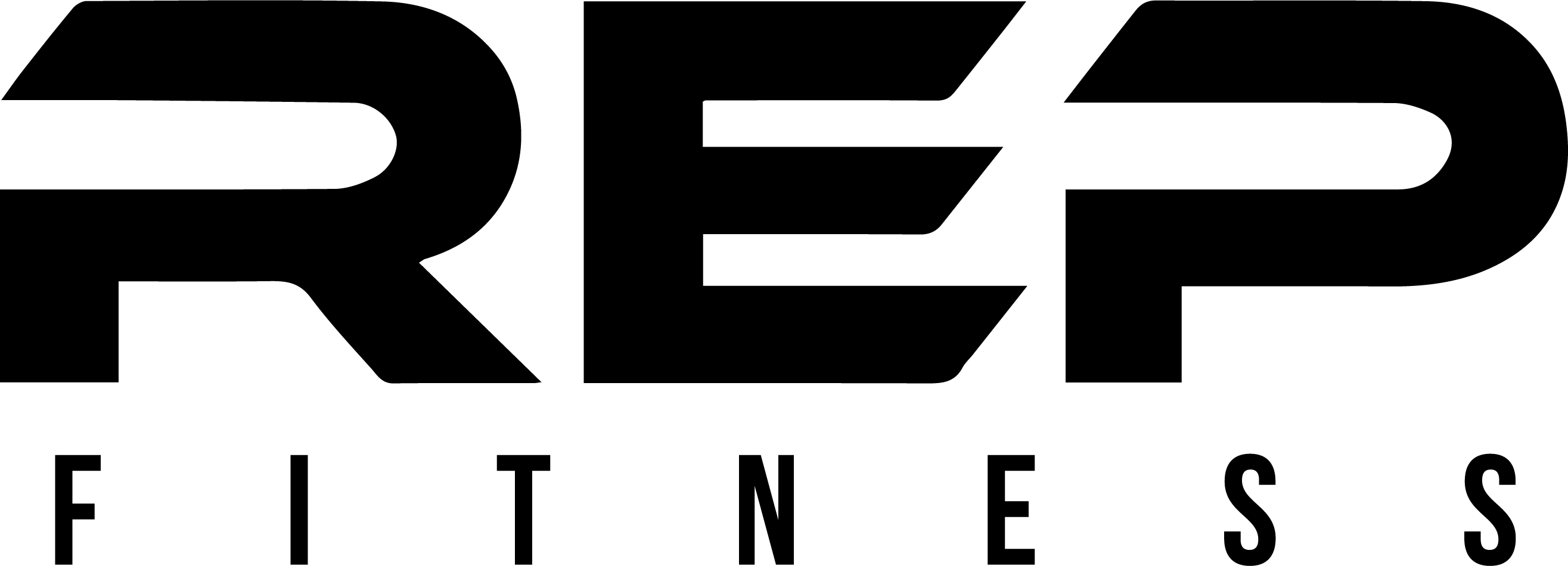
I’m debating on getting this bar or the Vulcan Elite. The Vulcan Elite has 221k PSI tensile strength, 28mm shaft, but bushings. I really want the needle bearings but I also want the 28mm shaft. Does the .5mm really make a big differnce? I’m also not worried about tensile strength or the price diffence. I’m also set on buying Vulcan because of the great bundle deals they offer.
The Elite is nice, it’s almost never in stock. How much you feel the difference in shaft diameter is mostly about your hand size. I have jumbo hands, so I don’t feel it; gotta be over a mm before I notice. You will probably feel a tad more elasticity in the 28 mm bars though, but again, it’ll be subtle, and it also has a lot to do with how much weight you’re lifting. Normally high PSI ratings like on the Elite make for more rigid bars, but Vulcan is one of the few companies that actually understands the process enough to get whip out of high tensile strength shafts. The Elite is a nicer bar overall, but there are pros and cons to bushings vs bearings, no doubt. The only way to avoid that is the Pro bar, but ya, it’s like $600.
Thanks for the feed back. I have larger hands as well being 6’3. I may just go with the Black. It should provide enough whip. I’m only snatching 91kg at the moment and I can feel my old rusty, slightly bent bar whip. I am only upgrading for the spin. The sleeves have seized up on mine.
I hear ya. Spin is important. Good luck!
I’m mainly a Crossfitter, but would like to add more focus on Oly lifts. I’ll be using it in my garage gym.
How would you compare the Vulcan Elite Oly bar vs the Matt Chan bar?
If you could choose only one of them, which would it be and why?
Thanks!
Since neither CrossFit or Olympic lifting have much to do with general strength training (bench press, deadlifts, etc) I would go with the Vulcan Elite. The Elite is a true 28 mm bar and will have more whip to it. I’m a huge fan of the Chan Bar, but I don’t use it for Olympic lifting, I use it for my “normal” workout. The argument can be made that either of them will serve your purposes very well, and they would, but for getting serious about Olympic lifts, may as well have a true Olympic bar.
The spin will be about the same for both; they are both standard bronze bushing bars. The knurl is also moderately aggressive on both, more so than your run-of-the-mill CrossFit/dual marked bars. Both can be had in chrome as well. I mean, it’s a tough call, but I would say there is nothing wrong with having a true 28 mm bar for CrossFit, but as you progress you may not want a multi-purpose bar for Olympic lifting. Does that help any?
Yes, it does.
I’ll be doing general strength training too.
I guess my best option would be two (or three) bars: dedicated power and oly bars and maybe a general purpose bar, but right now, I can only afford one. So if I started with a good dedicated oly bar, I could also use it as a general purpose bar too. Then, as I get more funds, I could buy a power bar or general purpose bar so I has a rack of purpose-specific bars. Is that a typical approach?
The Vulcan site says that the 20kg Elite Training Bushing Bar has a satin zinc plated shaft – only the sleeves are chrome. Did they used to make it in all chrome?
Yeah you’re better off with an Olympic bar than a power bar. Practically no one needs a power bar. Unless you’ve got 500 pounds on that bar when you’re benching and squatting, the extra elasticity of an Olympic bar isn’t a huge deal unless your form is meh (lots of jerking and bouncing.) Having said that, maybe the Chan is a nice middle of the road bar. It’s great for CrossFit and general lifting, and will be fine for Olympic lifts too. When your Oly lifts start getting into the 200-300 pound range, that’s when you add the true Olympic bar (with bearings then.)
No that was my bad, it’s been zinc shaft, chrome sleeves. Still, better than all zinc or any black zinc. The sleeves is where you want the chrome for cosmetic reasons. Normally I associate zinc shafts with moderate knurl, but Vulcan puts semi-aggressive knurl on the true Oly bars regardless of finish.
First off, super solid site jburgeson! Your input on all things garage gym is fantastic.
Secondly, I’m trying to figure out which bar I should get at this time. I was planning on getting the Rogue OLY WL bar, but then came across Vulcan. Now I’m not sure which bar to get. I lift in a garage gym (my house and a good friend’s place). He has a Rogue Oly bar and I love it. I saw Vulcan bearing bar and the elite bar and see the value they offer. I want to get a bar that’s solid and will last, but also want to save some coin if possible for a nice set of bumpers when the time is right. I do a fair amount of oly lifts with a little CF wod’s in the mix. I value good spin and a “quite” drop. A good friend of mine, nephew to Mr. Burgener, told me to just get the least expensive one and it’ll be really hard to tell the difference, and he’s probably right. Suffering from a problem of too many choices my man and I need some direction! So, between the Rogue Oly WL, Vulcan training bearing, and the Vulcan Elite which bar would you go with? Thanks!
There’s some validity to that statement about buying something cheap, but that really depends on ones skill level. A beginner can literally use anything. If all you have is $100 and you just want to start lifting, by all means be cheap. You’ll replace it down the road obviously, but you can worry about that later. People who already Oly lift probably shouldn’t just settle. You don’t have to spend a thousand bucks, but you should probably spend more than a couple hundred.
It sounds like any of those bars would serve you well though. The Rogue Oly is the most expensive by far, but you already know that you like it and there is something to be said for that. If you were willing to work with bushings for the savings, I’d say the Elite is a damn nice bar. I think it’ll feel closer to the Rogue Oly for you as the Vulcan bearing is 28.5 mm and has a softer knurl than the other two. I think it really comes down to whether you want to spend $370 for bushings, or $525 for bearings. You’re not going to dislike either of them I’d bet, but like I said, you already know what one of them feels like and that’s a good thing to know. If the prices were the other way around I’d say it was an easy decision.
Got ya. Good thoughts on skipping the Vulcan bearing, makes sense. I’d really like to say the bushing for $370 would be good, but I think I’d wish I’d gone after the Rogue bar a year from now.. Also been following the Rogue close-out section and they have some Oly WL bar on there for under $475, which makes the gap even smaller.
Thanks for your feedback! Keep up the solid work on the website!
Thanks Jared, I appreciate the kind words. Good luck!
This bar is now $299.99 on their website… but the lead-time is out to 05.31.15.
Does this or the Vulcan One have center knurling? I can’t seem to find that piece of info anywhere.
Very valuable website by the way, I refer to it before considering any piece of equipment for my shed-gym! Keep it up!
Thanks for that, Lu. Neither of these bars has a center knurl. And yeah, Vulcan sells out of bars pretty often. Sometimes it is hard to catch the bar you want in stock, which of course is annoying when you want it, but at least they do frequent discount prices. End of May is a long time out though =/
Hey, I have been shopping for a while now and always seem to find my way to one of your reviews. Great information. I have been doing CrossFit for about a year and a half now, the bars used at my box are made by “Again Faster”. I wish I could tell you exactly which ones but I’m not 100% sure. Needless to say I am not a huge fan. One of the coaches recently purchased his own Rogue 2.0 which I tried and immediately loved. I will most likely use the bar I purchase for Oly lifting only, while using the Again Faster bars for power lifting, although it would be nice to have a bar that could be used for both should I get a garage gym going at some point. I am considering The Vulcan Standard, Rogue 28MM Training Bar, Vulcan 28.5 mm Black Training Bearing Bar and The Ohio Bar. Currently leaning towards either the Rogue Training Bar or the Vulcan Training Bearing Bar. Thoughts? Suggestions? Please Help!
They are all 28.5 mm bars except the Rogue Trainer. Only one of them has bearings, but that probably won’t matter at this stage. The Standard can handle anything, and will do so for a very long time; it’s a really nicely built bar. The Rogue Trainer is geared strictly for Olympic lifts, but will still handle power lifts for the majority of people (people who don’t already bench 450 or something like that.)
All of them are good bars, and they’re all better than any AF bar that’s for sure. The Standard is probably the one I’d lean on. I don’t like black zinc on sleeves myself, so I’d prefer the Standard over the Vulcan Bearing or Vulcan One; the economy Standard. The Rogue Trainer is basically the Rogue Oly bar with no bearings, and it is the only 28 mm bar, so it’s probably worth considering that as well if you think you’ll be Oly lifting more than anything else. In any case, you aren’t considering anything I’d say stay away from, so you’re on the right track.
So, I recently contacted these guys since I was interested in purchasing their Vulcan Bearing Training Olympic Barbell or their Vulcan Standard Bearing Olympic Barbell. Since I had issues with bad barbell purchasing ( again faster and equipment raw) I asked if these guys inspected their bars and told them the issues I had with sleeve wobble on the other bars I purchased. They told me that barbell sleeve wobble is “not completely abnormal. Depends on the severity. You can’t test the straightness of bar like that honestly [spin tests]. If you can move the sleeve up and down with your hand, that means it will also move around when you spin it. Make sense?” Im not quite sure what the representative means by the last part but, Ive found from personal experience, that it is pretty easy to tell if a bar is bent by spinning the shaft. And I also think it is abnormal for a sleeve to wobble… I have never seen a elieko, werksan or rogue bar have sleeve wobble without the bar itself being bent… Any thoughts? is he right saying that sleeve wobble isn’t abnormal? Also, he never answered my question if they actually inspect their bars before they send them off..
Yeah I’m not sure what that answer means. Maybe wobble has different meanings for different people? If a bar is in the rack with no weight, and you push up on the sleeve right at the shoulder/collar, there should be no play. I mean, there is going to be like a hair of space obviously, but it shouldn’t move up and down noticeably. Same goes for laterally. If you pull the sleeve away from the bar or push it towards the center of the bar, it shouldn’t go anywhere. Again, slight hair of movement is fine as if it were any tighter stuff wouldn’t spin, but if it’s actually moving around that’s not good. If the sleeve does move around in either of these situations, even if the bar is straight it may not feel like it with the sleeves being so “loose”.
Now, if you spin the bar and the sleeves are on either (both) ends are going up and down as you spin the shaft, well that’s wobble as far as I’m concerned, and any amount of wobble noticeable to the naked eye is not normal. If you have to butt the bar up against an object and mark that object then spin the bar a dozen times just to notice a change in position, that’s probably what they mean by “not severe”. Now, AF does have massive wobble in some bars, so I don’t doubt for a second you had that problem, but that’s not the norm. I have only heard of that problem from AF honestly. No reports of that kind of wobble from Vulcan, Rogue, or obviously Eleiko/WerkSan.
In any case, I doubt very seriously that they inspect each and every bar before it ships. I’m sure like everything else in this world, shipments are just batch tested. A handful of bars out of however many hundreds/thousands/whatever. If it makes you feel any better, ppl have no problem getting on these comments and telling us when something sucks. I don’t edit that stuff out, even if I don’t agree, and I don’t think there is anything especially negative in any of the Vulcan posts.
Not sure if any of this actually helps any lol. I’m kind of confused by the answer as well.
Hi
Thank you for your previous advice with regards to building my garage gym. Thanks to you im training with a Rogue rml 490 and the vulcan oly. Im struggling with deciding on a bench. Especially benches that I can’t test via a retail store. Can you provide me with your opinion of the Cff pro series 0-90 incline/decline bench. Have you had the opportunity test it?
Anthony
I haven’t tried that one Anthony. It’s 11-gauge, so that’s good; the frame should last. I have two concerns. If these don’t bother you then I think you’re good to go.
First, no wheels. $500+ and 100+ pounds with no wheels is quite an oversight. That will get old, believe me. Second, is it really 90 degrees for that final setting? Because you don’t want it to be 90. You want it to be 85. I’d ask those guys for all of the degree settings and avoid it if the last one is literally 90. 90 is useless for a long-backed bench.
The bench does have wheels. You might have over looked it. The demensions are similar to the Rogue bench. I just don’t see myself forking out $815 for the rogue. The cff from first glance seems like a well made bench. I was just hoping you had some experience with the brand. In any case, Great advise regarding the 90 degree. I will certainly ask the question. I’ll keep you posted.
Anthony
BTW they also have an additional bench which is the next tier down that is 0-80 degrees. How do you feel about an 80 degree angle?
AL
80 is better than 90. I’m just thinking about seated presses. You want to be upright, but 90 puts your torso in a slight forward lean because of the lats and curve of the spine. 85 is where we actually feel balanced for an overhead press; while seated anyway. 80 would work, just puts you a little further back. Beyond the 90, it’s really just preference. Btw, something to look out for. There are a few adjustable bench models out there where the seat itself doesn’t actually adjust. It just stays flat. Watch for that.
Hi,
Let me start out also by saying what a blessing coming across your sight has been. Seems like there is not a single thing that I have purchased for my garage gym that I don’t first check for information on this site. You finished up this article by saying that if you could change one thing about the Training Bearing Bar would be to wrap it in Hard Chrome. You had also mentioned that out of the four bars from Vulcan you reviewed, you liked the Standard and Elite the best. Does wrapping the Training Bearing Bar in Chrome elevate your opinion of it to the level of the Standard? I know we are talking about a $55 or so price difference (which I would chalk up to the difference between the bushings and bearings). Essentially I am torn between the Training Bar and the Standard, although I was tempted by the Elite both because of the high quality all around and desiring a center knurl, but I don’t know if I can justify the $100 between the Elite and the Standard. Thanks again for your dedication to this site.
Hey Jeff, thank you. The chrome on the Training bar would be an upgrade, but the Standard is still probably a better all around bar than the One and the Trainer. The reason I say that is because the Standard is built to withstand commercial use; the tolerances just feel a hair tighter. The issue I had with the Trainer isn’t so much that it’s not chrome so much as it’s black zinc. The bright zinc on the Standard is almost as good as chrome, and less expensive. That said, for personal use the Elite is a better choice if your program is heavily based on the snatch and clean. If you spend more time squatting and benching, then the Elite is probably an unnecessary upgrade. I also still have sort of mixed feelings on bearing bars that run far less than the norm. I doubt that a home user would ever damage the bearings, but it has to be more likely than with a $600 bearing bar that didn’t have to make compromises in order to make it to market at a lower price… if that makes any sense. Does that answer your question at all?
Yes, that makes perfect sense. That’s the type of thing I needed to hear. Been contemplating the options so long I could no longer see the forest for the trees. Thank you.